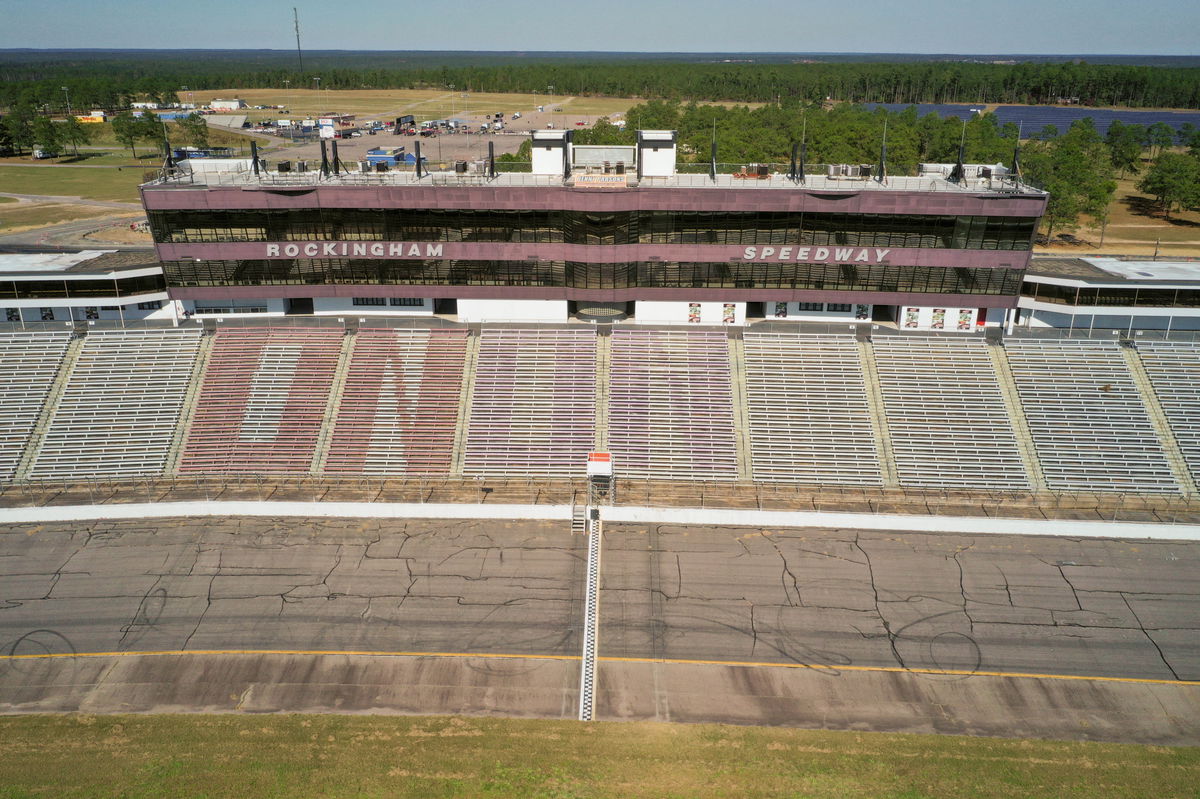
Imago
NASCAR Rockingham Speedway

Imago
NASCAR Rockingham Speedway
For decades, the area surrounding Joliet, Illinois, would come alive for a weekend. RVs used to occupy the vacant fields for miles. Hotels were booked in advance. Local restaurants were jam-packed with stock car racing enthusiasts, with staff having to work double shifts. And, thousands of fans made their way to Chicagoland Speedway. Even the surrounding neighbourhood enjoyed the temporary economic boom. But today, the grandstands are empty, and the steady income that came from tourism has vanished into thin air.
Watch What’s Trending Now!
NASCAR events weren’t just races; they were lifelines for small towns. The entire community benefited every time the race weekend was on the horizon, with gas stations being lined up with vehicles, and mom-and-pop shops crowded with tourists. And even though Chicagoland is making a comeback in 2026, other tracks haven’t been so lucky.
ADVERTISEMENT
Why is NASCAR shifting strategy?
The late 1990s and early 2000s saw virtually every region in the South and Midwest host a Cup Series race. Rockingham Speedway had a fixture in February, while Kentucky Speedway finally hosted its first race at the highest level in 2011 after years of lobbying. And, the Chicagoland Speedway was meant to be a gateway into the Chicago market in 2001, and even held night races from 2008 to 2010. But then came the television ratings in the early 2000s.
Dale Earnhardt had tragically passed away, and the Gen-5 (Car of Tomorrow) didn’t sit well with the fans. NASCAR was forced to rethink its approach and decided to pivot from smaller markets to ‘destination events,’ creating a ripple effect for old-school tracks, with Rockingham Speedway losing its spot on the Cup calendar in 2004 while Chicagoland was dropped from the schedule in 2019.
Now imagine a track (Kentucky) that hosted as many as 107,000 fans in its inaugural race, was not spared and was then removed in 2021, while New Hampshire Motor Speedway, which held two races at one point, was cut to one. It was all a matter of strategy
ADVERTISEMENT
NASCAR was clear about a few things:
- They wanted major media markets to host more races, even if it came at the expense of the sport’s roots. That’s why Los Angeles got a temporary stadium race at the Coliseum, while Chicago hosted stock car racing’s first street race in 2023.
- The sport also hosted its first points-paying international race since 1958 at the Autódromo Hermanos Rodríguez, while the Circuit of the Americas also entered the rotation. The move made sense ‘on paper’, as NASCAR could maximize exposure, attract new demographics, and encourage urban tourism. But for local towns, the situation looked bleaker than ever.
ADVERTISEMENT
Top Stories
Kyle Busch Hits Rock Bottom as Snowball Derby Nightmare Sparks Wave of Fan Sympathy

Dale Jr.’s Media Empire Targeted as YouTuber’s Unjust Attack Sparks Fan Outrage

‘RIP’: NASCAR World Crumbles in Tears as 39-YO Former JR Motorsports Driver Passes Away
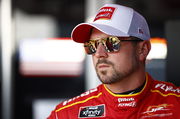
Carson Hocevar Takes a Sly Dig at NASCAR’s Data-Driven Gimmicks in Honest Dirt Track Rant
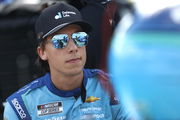
Kevin Harvick Son Keelan Silences Critics With Masterclass Comeback to Hunt Down Rivals in Biggest Career Win
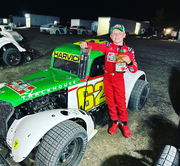
Cutting down the economic engine
Thousands of NASCAR fans arrive to attend a race, often in RVs, and spend days in the area. In a study commissioned by Daytona International Speedway in 2017, it was found that nearly $800 million is generated by the region every time the Daytona 500 is held. Hotels are reserved months in advance, and restaurants are packed with tourists. Even gas stations and grocery stores see an influx in sales.
And, if you look at the race weekends at Talladega Superspeedway, it brings in an estimated $420 million to Alabama’s economy, while Bristol Motor Speedway’s famous ‘night race’ turns a quiet and small Tennessee town, with fewer than 30,000 residents, into the state’s fourth-largest ‘city’ when the race is held. One reason, that some of the NASCAR drivers even have their businesses near tracks. Take Michael Waltrip’s brewery in Bristol, for instance. While that’s for the big names, even for locals, the economic boom is like the Super Bowl.
ADVERTISEMENT
Why?
- There is a significant spike in seasonal employment.
- Tracks hires extra staff, security personnel, and concession vendors, while residents rent out their land for parking or camping.
- For small business owners, the revenue generated from race weekends could account for 20–30% of their annual income. But the numbers collapse when NASCAR leaves.
ADVERTISEMENT
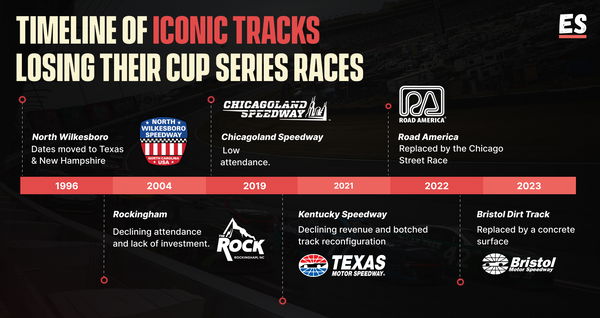
ADVERTISEMENT
Community stories: What did fans lose when NASCAR left?
For decades, Rockingham Speedway was a staple in the Cup Series calendar. Hotels in the Sandhills region of North Carolina looked forward to the February and November races to fill their rooms, with business being slow during the rest of the year. But when NASCAR pulled the Cup race at ‘The Rock’ in 2004, the surrounding community suffered because of the lack of tourism. Sure, the venue has hosted the occasional ARCA race, and more recently, the Truck and Xfinity Series races this season, but the economic benefits from hosting a Cup Series fixture never returned.
Meanwhile, the inaugural race at Kentucky Speedway brought a record 107,000 fans in 2011. The traffic jams brought the interstate to a halt for hours, but local businesses thrived because of the number of tourists. But when the venue’s only Cup Series date was reassigned in 2020, restaurants that would staff up for race weekends saw their busiest time of the year vanish in the blink of an eye. And then there’s North Wilkesboro Speedway, with perhaps the most heartbreaking stories of them all.
Once a crown-jewel fixture on the NASCAR calendar, it was stripped of its two Cup Series dates in 1996, with the races being moved to Texas and New Hampshire. But Wilkes County suffered the most as a result of this fallout. The track’s closure left businesses struggling and the community grieving the loss of a significant economic source for their livelihoods. For years, the track and its grandstands remained dilapidated, until it was finally renovated for the All-Star Race in 2023. It wasn’t just a revival of the venue but the community as well, all thanks to Dale Earnhardt Jr.
ADVERTISEMENT
The real winners and losers in track consolidation?
The winners in NASCAR’s change in strategy are tracks in major or emerging markets.
- The Los Angeles Coliseum’s exhibition race wasn’t a permanent fixture; it gained significant media coverage and fan attention after hosting ‘The Clash’.
- Nashville Superspeedway was also revived after a decade, bringing stock car racing back to the ‘Music City’.
- The Chicago Street Race will no longer be a fixture on the Cup Series calendar from 2026, but it did pave the way for another such fixture at San Diego’s Naval Base Coronado.
ADVERTISEMENT
Meanwhile, some of the smaller tracks in the not-so-urban areas suffered from the shift in NASCAR’s priorities. We’re talking about venues like Rockingham Speedway (in the Cup Series), Kentucky Speedway, Auto Club Speedway, Greenville-Pickens Speedway, and the Riverside International Raceway, amongst others.
Their departure from the calendar took away an income stream for the locals. And, many long-term fans are disappointed.
Beyond the raceway: Cultural identity at stake
NASCAR is a culture. Families have been camping at venues like Darlington Raceway for generations. The likes of Richard Petty, Junior Johnson, Dale Earnhardt, and Rusty Wallace made their mark at Rockingham Speedway, while North Wilkesboro became renowned for its connection to moonshine runners during the American Prohibition era.
And, when one of these tracks loses a NASCAR weekend, for some, it’s an end to their family tradition.
- Schools and workplaces can no more plan activities around the fixtures.
- Churches cannot host pancake breakfasts for traveling fans.
- The large land that was once filled with RVs is now desolate.
And, all this raises one plain question: Is NASCAR risking its connection with the grassroots and the existing fanbase in a bid to expand the sport? And, if not, what are their plans?
The path forward
NASCAR hasn’t completely disregarded its roots. Tracks without Cup Series action have been repurposed to serve other needs.
- Chicagoland is being brought back to the calendar in 2026, while North Wilkesboro, against all the odds, was revived using public funding and fan pressure, and recently hosted an All-Star race.
- Kentucky Raceway has hosted some small events, including driving schools.
You can consider adopting a rotational schedule, where legacy tracks can host the occasional Cup Series race. NASCAR recently hosted the Truck and Xfinity Series races at Rockingham Speedway, and similar initiatives will not just help sustain the venues but also help the local communities.
Partnerships with local and state governments are in motion to revive racetracks. It’s about time that the sanctioning body finds a balance between tradition as well as expansion.
Conclusion
For the sport to remain sustainable, it needs to attract newer audiences and pivot to urban areas while experimenting with street/road course races.
ADVERTISEMENT
ADVERTISEMENT
ADVERTISEMENT

